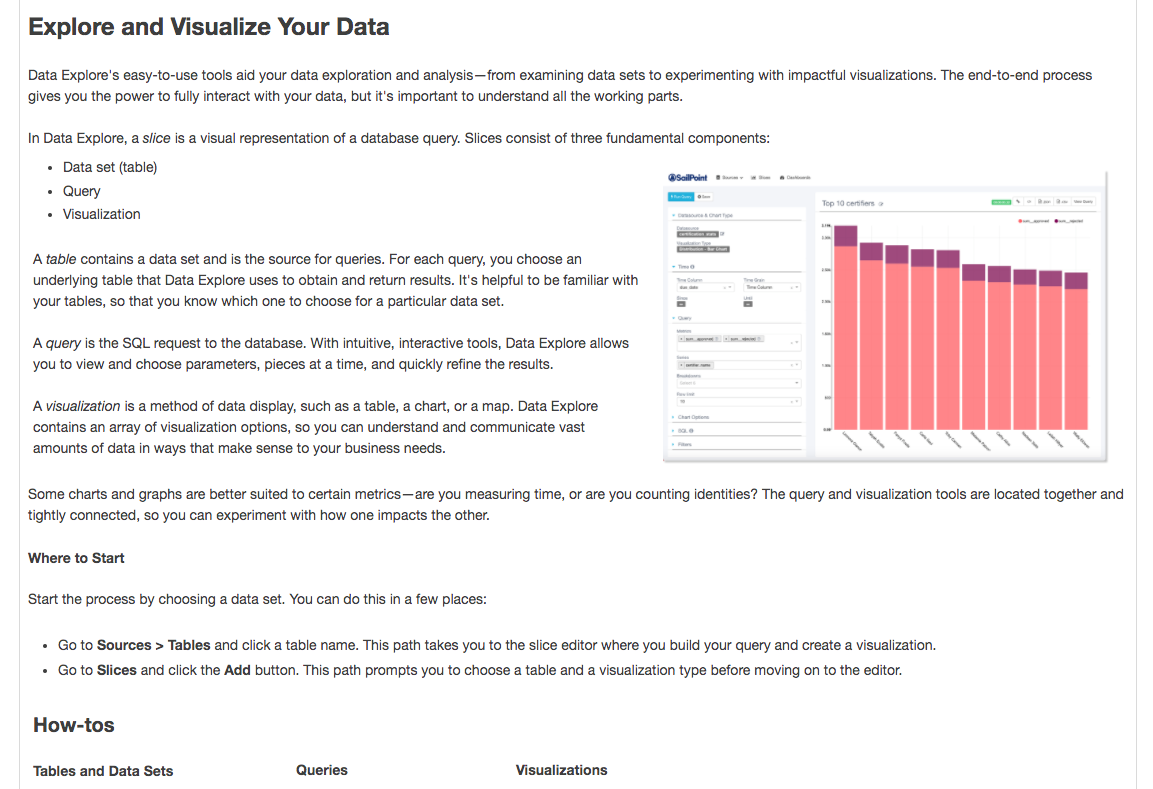A user’s guide to IdentityAI
At SailPoint, I was the lead writer for a beta machine learning product, IdentityAI. I wrote initial labels and help flows, built the in-app help site, and established the forum and Q&A site.
The following cast study explains the introductory content I wrote for an IdentityAI tool called Data Explore.
Problem: How to use Data Explore
Data Explore was the data analytics tool for IdentityAI. It had a robust set of features for querying and analyzing identity governance data sets.
Problem #1: It was built from an open source tool, so it didn’t quite fit into the other IdentityAI features and tools.
Problem #2: It was a part of a beta product, so it had defects that we had to write around.
Problem #3: It was a brand new tool within IdentityAI, so it had no context or documentation.
Approach: User education
“If you build it, they will come.”
With user education as the north star, I built all in-app help and microcopy from the bottom up.
For the user, I wanted to:
Set expectations
Answer questions proactively
For my work, I wanted to:
Gain user insight and collect research
Iterate
I did this by:
Building the help site (user and admin)
Tying microcopy and in-app help to the help site
Building and encouraging engagement on the Q&A site and the user forum
Feeding forum feedback into microcopy and help
Methods: Stakeholder engagement
Product
I worked closely with the Product Manager to inform product priorities and direction. I relied on them to provide customer insight beyond the forum and Q&A. However, ultimately, they relied on the forum and Q&A for deep user feedback!
UX
I worked with a UX Designer to ideate in-app microcopy and help and to validate or challenge my ideas and work.
Engineering
I worked with Engineering to help replace much of the open source copy to fit our needs. I relied on them for data, test environments, and reality checks.
